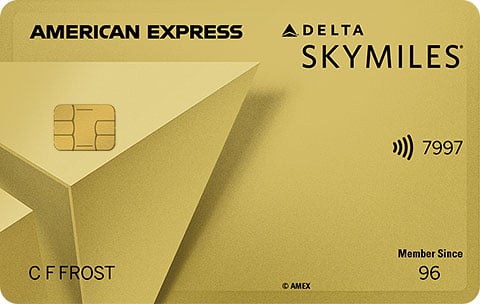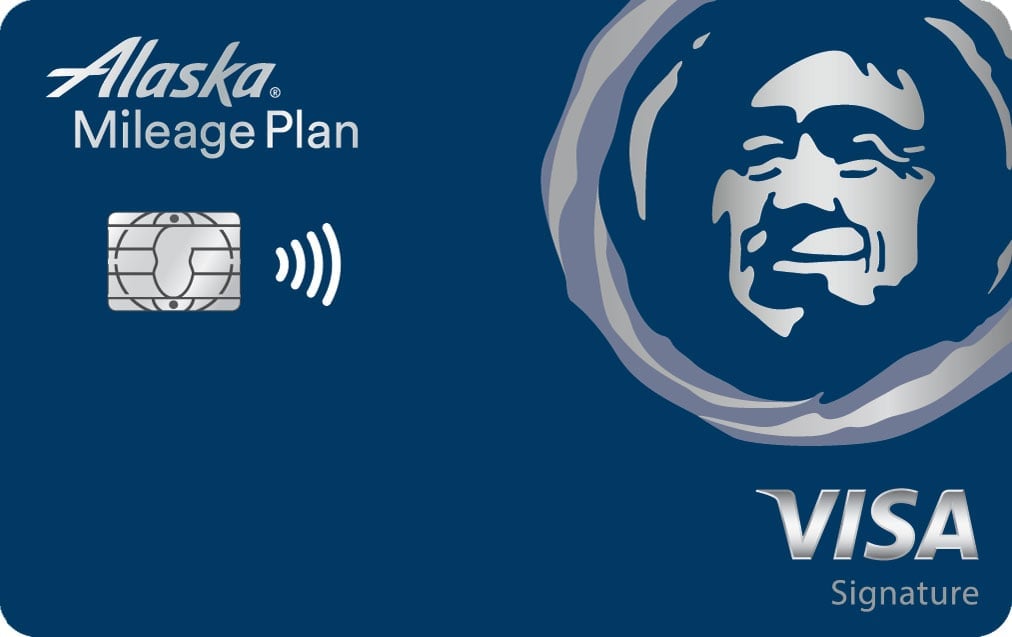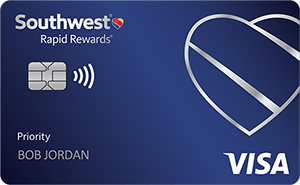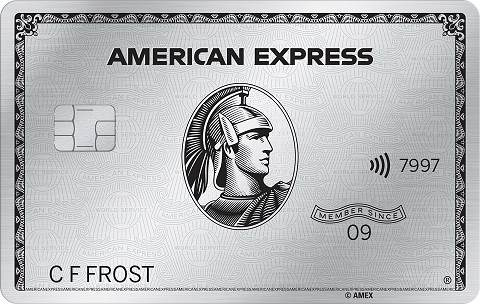A Guide to Google Flights
The leader in search offers an extremely robust flight search tool to help find cheap and convenient fares.

Many or all of the products on this page are from partners who compensate us when you click to or take an action on their website, but this does not influence our evaluations or ratings. Our opinions are our own.
Are you looking for cheap flights? Happily, for travelers, there are lots of ways to find discounted airfares. One way is with Google Flights, a powerful tool for searching out the best deals on flights. Let’s take a look at how it works, how to save money with Google Flights and the different ways to maximize it.
How to use Google Flights
On the surface, Google Flights seems pretty simple to use — and it is. Anyone can navigate to the site, input their search information and receive results. For example, we used Google Flights to search for a round-trip ticket in economy class from Orlando to New York. But you can also search for one-way or multi-city itineraries on Google Flights, as well as business class tickets.
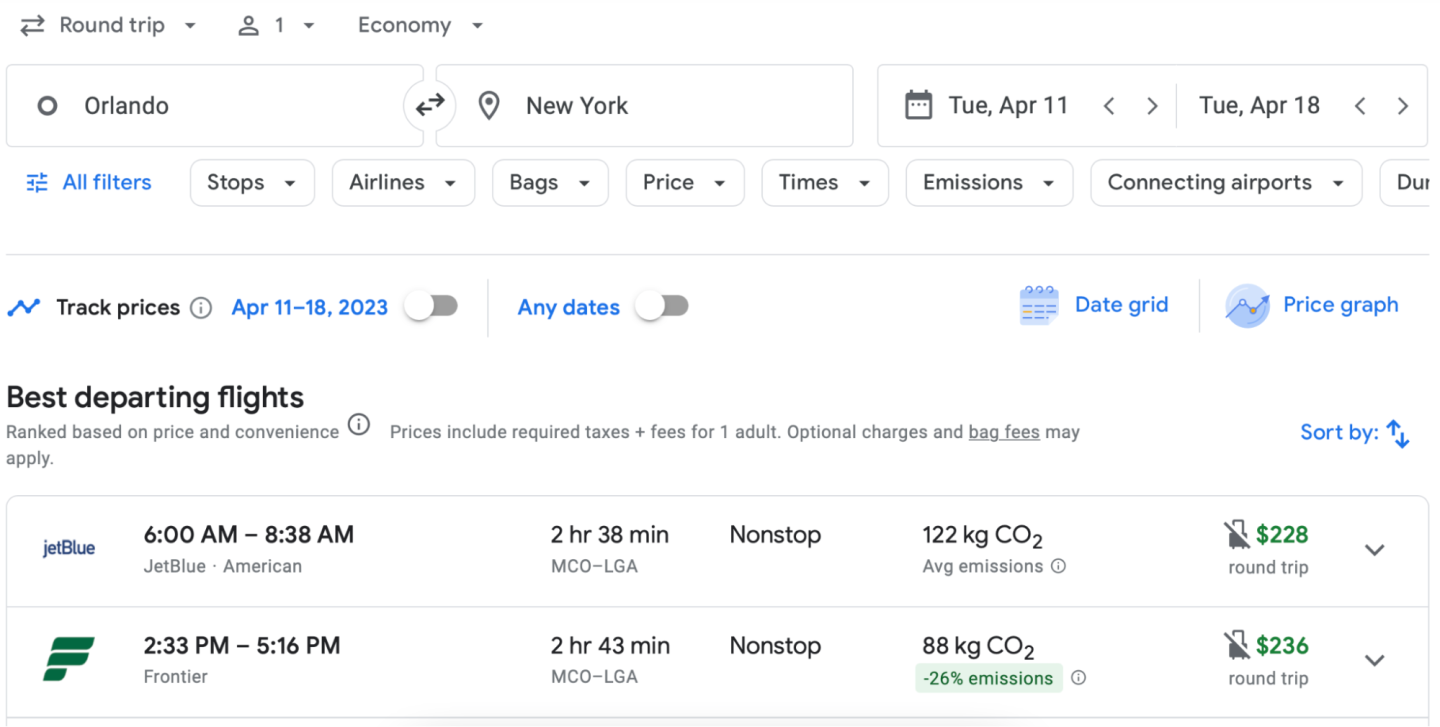
When you do this, Google will show the flights it thinks are best, whether that means they’re the fastest, the cheapest or some other combination of factors.
You can stop there if you’d like. Once you’ve selected the flights you prefer, Google will either take you to a booking site or allow you to book directly within its platform.
But there’s so much more to customize, including departure times, luggage policy and airlines.
Filtering by price

Perhaps the most useful feature of Google Flights is the ability to set your price point.
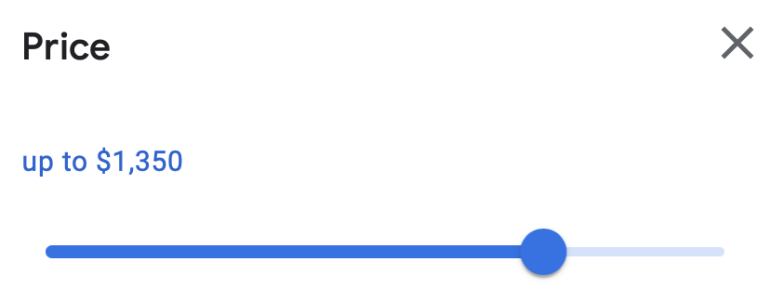
If you’re especially price-sensitive, filtering out expensive flights can show you exactly what’s available within your budget.
» Learn more: The best airline credit cards right now
Searching for nonstops

Are you the type of flyer who simply wants to get there? Are connections the bane of your existence?
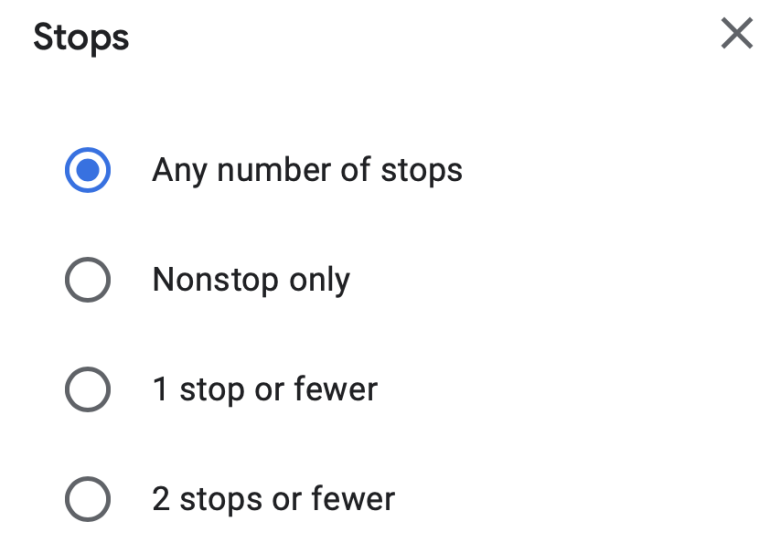
The stops filter on Google Flights allows you to set how many layovers you’re willing to tolerate, whether that’s one stop, two stops or no stops at all.
Selecting departure times

If you have an early-morning meeting or you’re looking to leave a little later, you’ll want to filter out the flights that don’t fit your needs. To do so, hit the “times” button on the search page.
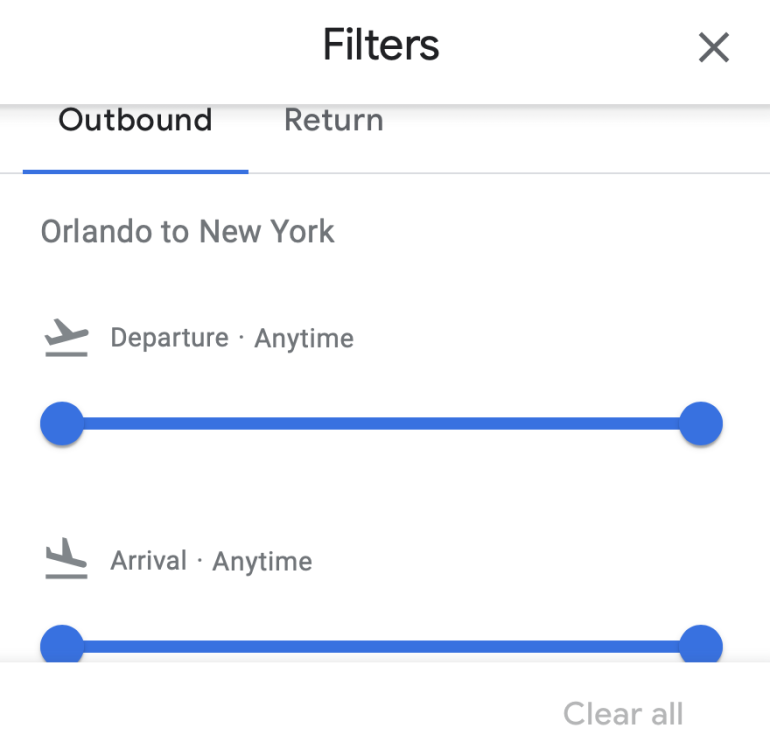
From here, you can edit and search for the time your flights will take off and land for both legs of your journey.
Choosing your airlines

Are you a Star Alliance loyalist? How about a fan of SkyTeam? If you’re trying to stick with an airline alliance — or even a specific airline — Google has that covered.
You can use the "airlines" filter to show different airlines on the route that you’re searching. Depending on your needs, you can opt to show results from different alliances or by individual airlines. And as of May 22, 2024 Southwest Airlines now shows in Google Flights results.
This can be especially helpful if you have a travel voucher to spend or you’re looking to earn elite status on an airline.

» Learn more: The best airline elite status for 2024
Include your luggage in your search

Whether you’re an overpacker or a light traveler, Google Flights gives you the option to choose how much luggage you’d like to bring.
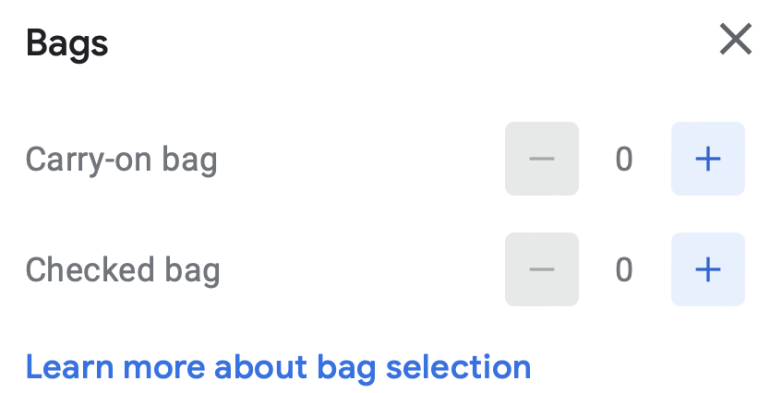
The "bags" filter can show you flights that include luggage — so you don’t have to worry about additional fees.
» Learn more: 7 tips to avoid paying checked baggage fees
Setting your layovers

Some savvy flyers enjoy the ability to take a few stopovers en route to their destination. Others, well, not so much.
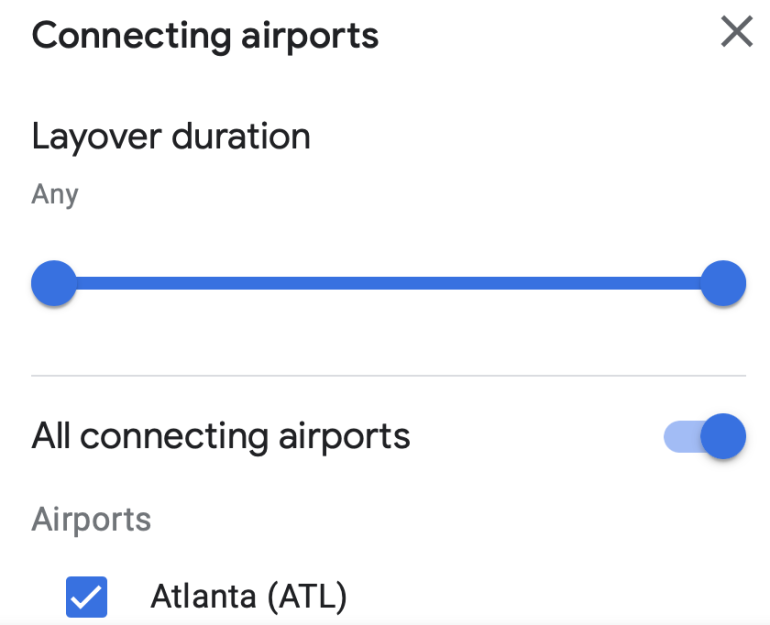
If you have to stop over, the "connecting airports" filter allows you to select where your layover will be. Have you been wanting to check out the SkyDeck at the Delta Sky Club in New York-JFK? Well, you can filter out other airports and choose how long you’d like your layover to be with this option.
Limiting the length
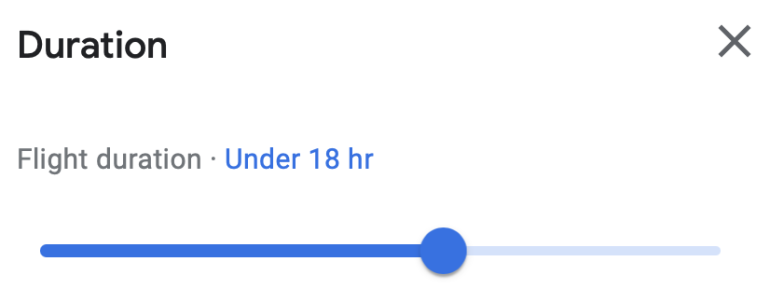
Combined with the ability to pick your layovers, limiting the duration of your flight allows you to pick the fastest routes. This is especially useful when Google presents options that can take 30 hours or more.
Conversely, you can also choose to keep this toggle unused, thus letting you build in some free city-break layovers on the longest flights.
Saving the environment

It’s no secret that air travel produces some serious carbon emissions. If that's a concern, Google has a filter to show you which flights have a lower impact on the environment.
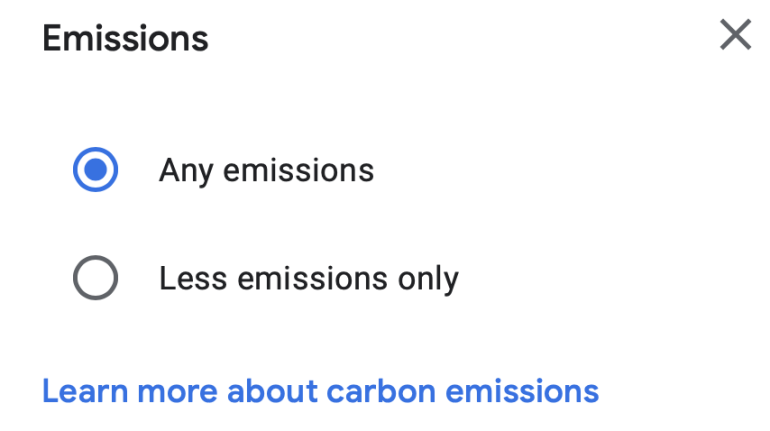
Although the filter isn’t robust, you are able to see the emissions in your search results.
» Learn more: 4 cheap ways to be an eco-conscious traveler
Why are Google Flights cheaper?
So we’ve explored all the different filters available during a standard search with Google Flights. These give you the ultimate in customization, so if you’d like a flight from New York to Paris featuring two stops, a layover in Frankfurt and two checked bags — that’s an option.
However, there are also ways to maximize Google Flights to save money. Here's how.
Check out the fare calendar
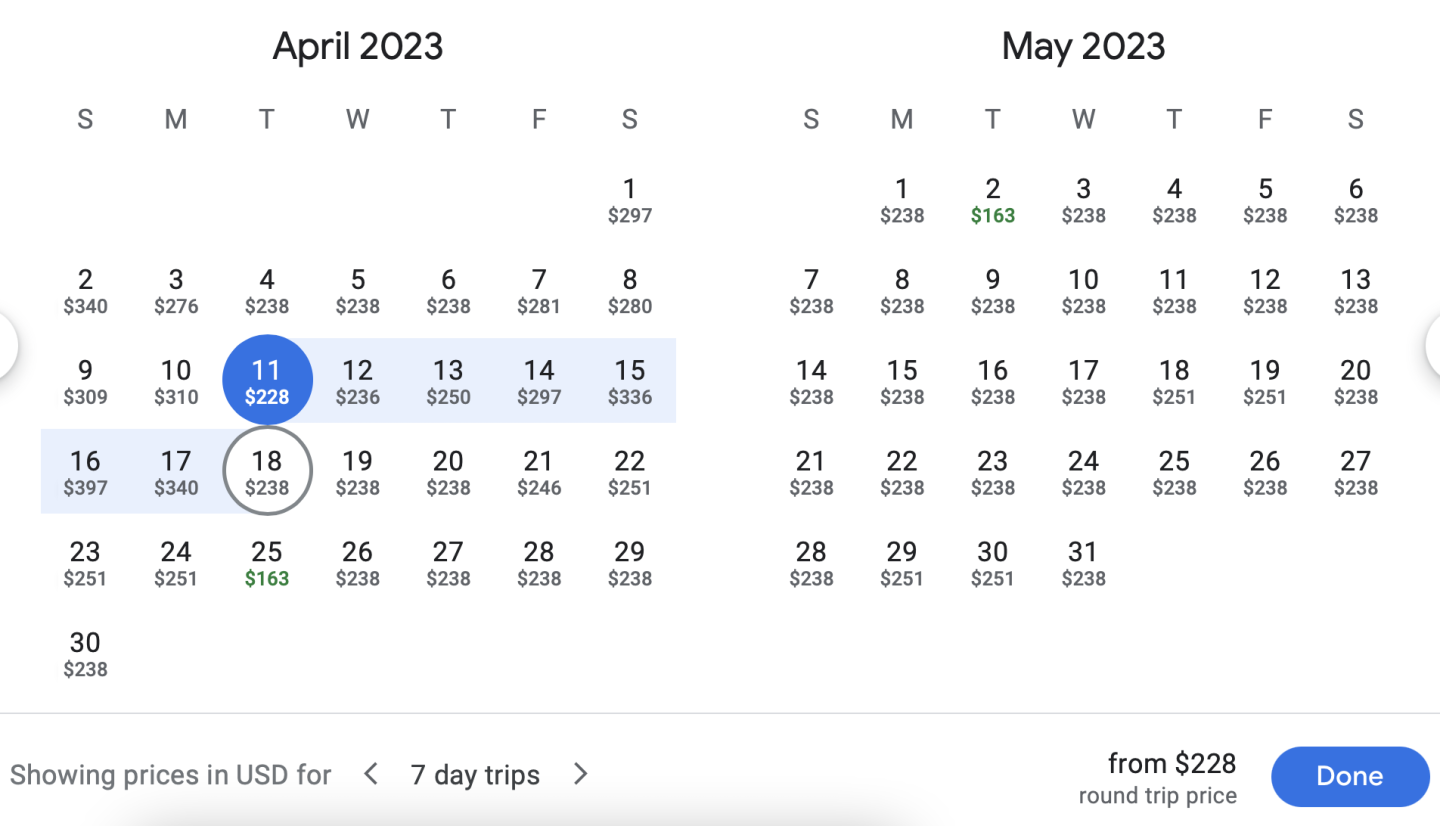
When you start out your search, you’ll notice that you pick your dates from a calendar. However, if you hover over the calendar long enough, you’ll start to see prices appear.
Google Flights displays ticket prices for a two-month window. If you have flexibility on your travel dates, it’s worth taking a look around to see when flights are the least expensive. Google even helps you out by highlighting the cheapest fares in green.
Search multiple airports
Google Flights doesn’t limit you to searching from a single airport. This handy feature allows you to check out flights from neighboring airports, as well as those which you’re willing to depart from.
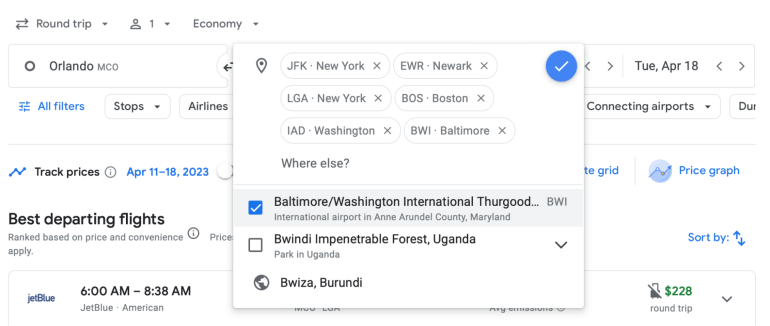
To search for multiple airports, start typing in the search bar.
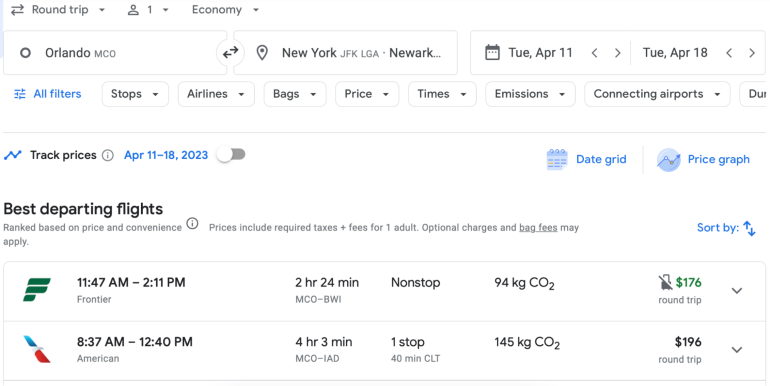
In this case, adding multiple airports allowed us to find a flight for $176 rather than the $228 in the original search.
Allow separate tickets

This is actually a type of filter, but it’s a bit more advanced than your usual options. When searching, you have the option whether to allow separate tickets or not. It’s found at the very bottom of the little “all filters” tab on your search results page.
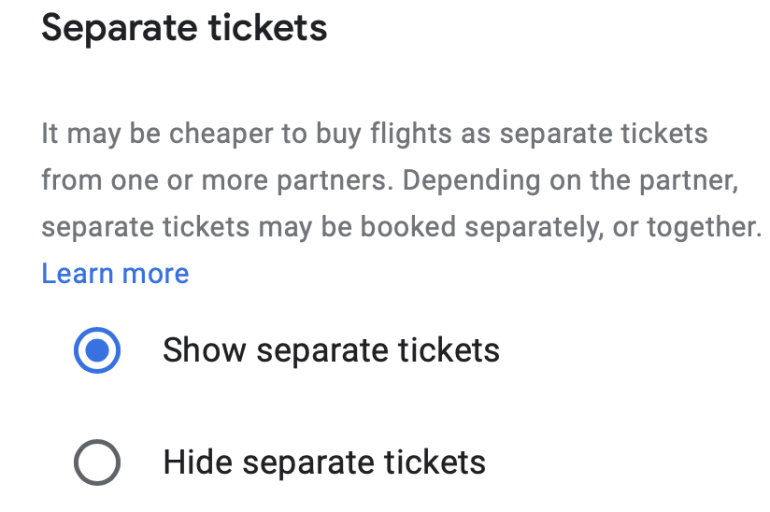
Allowing for separate tickets means that you may need to book two one-way flights rather than a round-trip flight, though Google will only highlight these results if they’re cheaper than a single-ticket itinerary.
Set a flight alert

Did you know that Google Flights can send you emails? If a flight you’re looking for is too expensive, you can sign-up for alerts that’ll let you know when the price drops.
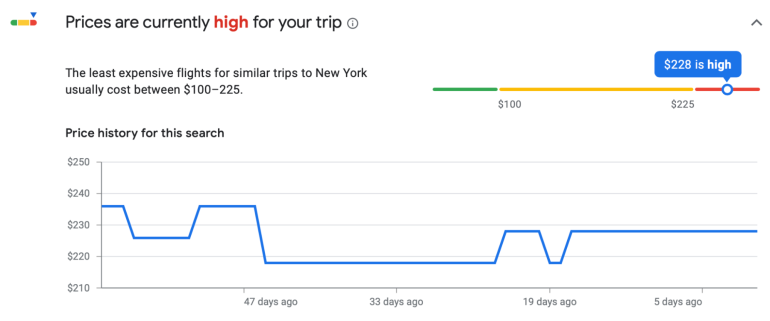
Along with this, Google will also let you know whether the price for your flights is appropriate. This little graph won’t show up on all searches, but if Google has data for the flight you’ll see this pop up when you’re scrolling through the search results.
Use the Google Flights Explorer
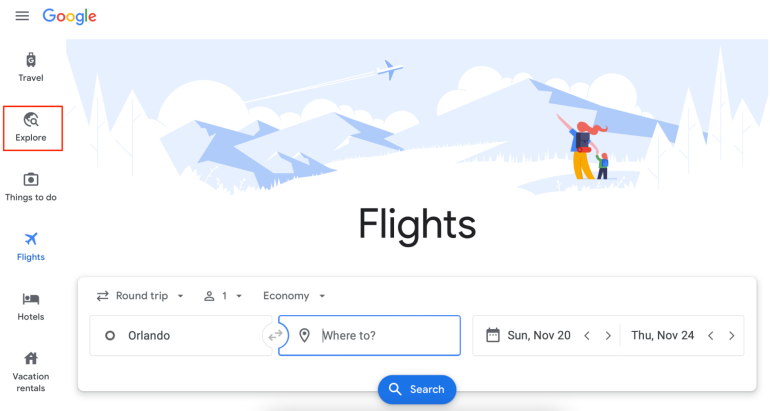
Do you have flexibility on your travel? Are you just trying to figure out somewhere to go? Perhaps the most underrated part of Google Flights is the Explorer option, which can be found on the left-hand side when on the Google Flights page.
This incredibly useful tool allows you to set extra flexible parameters for a trip. Say, for instance, you’d like to take a week-long vacation within the next six months. You only want to fly business class, however, and you don’t want to pay more than $2,700 round-trip.
Input all this information and a Google Flights map will pop up, showing you all your available options.
Like standard Google Flights, the Explorer tool also has a variety of filters. This includes the ability to sort by airlines and airline alliances, making this a powerful instrument for those looking to earn elite status with airlines.
» Learn more: 6 ways to save money on flights
Save money by booking with points and miles
Airline miles or points — the currency that you can redeem for flights, hotel stays and other rewards — work a little differently at every airline. According to NerdWallet analysis, they're generally worth 1 to 1.6 cents each.
But before you start using points and miles to book flights, you have to earn them. Beyond flying, another way to amass a large number of travel rewards is to earn a sign-up bonus for an airline credit card from your preferred brand.
$0 intro for the first year, then $150.
$95.
$0 intro for the first year, then $150.
$149.
• 2 miles per $1 on purchases made directly with Delta and at U.S. supermarkets and restaurants (including takeout and delivery in the U.S.).
• 1 mile per $1 on all other eligible purchases.
Terms apply.
• 3 miles per $1 on eligible Alaska Airlines purchases.
• 2 miles per $1 on eligible gas, EV charging, cable, streaming services and local transit (including ride share) purchases.
• 1 mile per $1 on all other purchases.
• 5 miles per $1 on prepaid hotels booked through United.
• 2 miles per $1 on United purchases.
• 2 miles per $1 at restaurants and hotels (when booked directly with hotel).
• 1 mile per $1 on all other purchases.
• 3 points per $1 on Southwest purchases.
• 2 points per $1 on Rapid Rewards hotel and car rental partner purchases, on local transit and commuting (including rideshare) and on internet, cable, phone services and select streaming.
• 1 point per $1 on all other purchases.
If you seek more flexibility in redeeming miles for award flights, consider applying for a more general travel credit card instead. A more general travel credit card differs from an airline card in that you can book flights with multiple carriers, rather than reaping the benefits of staying loyal to a single brand.
The more high-end the travel credit card, the more benefits you can enjoy, including airport lounge access or automatic elite status in certain programs. That said, a brand-specific airline card can net you benefits like waived baggage fees, which can have meaningful dollar value.
$695.
$95.
$95.
$95.
Earn 80,000 Membership Rewards® Points after you spend $8,000 on eligible purchases on your new Card in your first 6 months of Card Membership. Terms Apply.
Enjoy $250 to use on Capital One Travel in your first cardholder year, plus earn 75,000 bonus miles once you spend $4,000 on purchases within the first 3 months from account opening - that’s equal to $1,000 in travel.
Earn 100,000 bonus points after you spend $5,000 on purchases in the first 3 months from account opening.
Earn 60,000 bonus ThankYou® Points after spending $4,000 in the first 3 months of account opening, redeemable for $600 in gift cards or travel rewards at thankyou.com.
• 5 points per $1 on flights booked directly with airlines or with American Express Travel, on up to $500,000 spent per year.
• 5 points per $1 on prepaid hotels booked with American Express Travel.
• 1 point per $1 on other eligible purchases.
Terms apply.
• 5 miles per $1 on hotels and rental cars booked through Capital One Travel.
• 2 miles per $1 on all other purchases.
• 5 points per $1 on travel booked through Chase.
• 3 points per $1 on dining (including eligible delivery services and takeout), select streaming services and online grocery purchases (not including Target, Walmart and wholesale clubs).
• 2 points per $1 on other travel.
• 1 point per $1 on other purchases.
• 10 ThankYou® points per $1 spent on hotels, car rentals and attractions booked through Citi's travel portal.
• 3 points per $1 on air travel and other hotel purchases.
• 3 points per $1 on supermarkets.
• 3 points per $1 on gas stations and EV charging stations.
• 3 points per $1 on restaurants.
• 1 point per $1 on all other purchases.
Final thoughts on using Google Flights
Google Flights is a robust search tool for those looking to book flights.
Although it’s easy to use, don’t be fooled by its simple appearance. It contains a wide variety of filter options allowing you to design your perfect itinerary and save money while doing it.
How to maximize your rewards
You want a travel credit card that prioritizes what’s important to you. Here are some of the best travel credit cards of 2025:
Flexibility, point transfers and a large bonus: Chase Sapphire Preferred® Card
No annual fee: Wells Fargo Autograph® Card
Flat-rate travel rewards: Capital One Venture Rewards Credit Card
Bonus travel rewards and high-end perks: Chase Sapphire Reserve®
Luxury perks: The Platinum Card® from American Express
Business travelers: Ink Business Preferred® Credit Card
Chase Sapphire Preferred® Card
Travel
Dining
🔥 Huge highest-ever bonus on NerdWallet's 2025 Best All-Purpose Travel Rewards Card is back. Don't miss your rare chance to: Earn 100,000 points when you spend $5,000 on purchases in the first three months. That's worth at least $1,250 toward travel booked through Chase.


